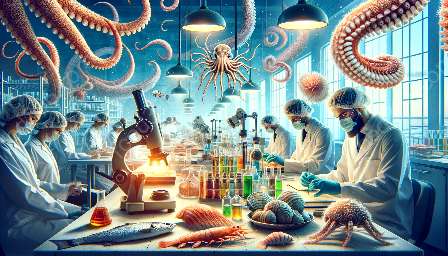Seafood quality control and assessment is an essential aspect of the seafood industry, ensuring that the products meet safety, freshness, and quality standards. Chemical analysis plays a crucial role in this process, allowing for the detection of contaminants, the assessment of freshness, and the determination of nutritional content.
Importance of Chemical Analysis
Chemical analysis is vital in the seafood industry as it provides essential information about the composition, safety, and quality of seafood products. By conducting chemical analysis, seafood producers and regulators can ensure that the products meet the required standards and regulations, thereby safeguarding the health of consumers and maintaining the integrity of the industry.
Detecting Contaminants
One of the primary roles of chemical analysis in seafood quality control is the detection of contaminants such as heavy metals, pesticides, and toxins. Contaminants can enter the seafood supply chain through various sources, including environmental pollution, improper handling, and processing practices. By employing advanced analytical techniques such as mass spectrometry and chromatography, it is possible to identify and quantify the presence of contaminants in seafood products, thus preventing their entry into the market and protecting consumers from potential health risks.
Assessing Freshness
Chemical analysis is also instrumental in assessing the freshness of seafood products. The degradation of quality in seafood, often associated with spoilage and decomposition, can be monitored through the analysis of chemical markers such as volatile compounds, pH, and biogenic amines. These indicators provide valuable insights into the freshness of seafood and enable producers to make informed decisions regarding product shelf life and storage conditions, thereby minimizing food waste and ensuring consumer satisfaction.
Determining Nutritional Content
Furthermore, chemical analysis allows for the determination of the nutritional content of seafood products, including essential nutrients such as omega-3 fatty acids, proteins, and minerals. By quantifying these components, producers can accurately label their products with nutritional information, providing consumers with transparent and reliable details about the nutritional value of the seafood they consume.
Techniques and Methods
Several sophisticated techniques and methods are employed in chemical analysis for seafood quality control and assessment. These include but are not limited to:
- Gas Chromatography-Mass Spectrometry (GC-MS)
- High-Performance Liquid Chromatography (HPLC)
- Atomic Absorption Spectroscopy (AAS)
- Polymerase Chain Reaction (PCR)
These analytical methods enable the identification and quantification of a wide range of compounds, from chemical contaminants to nutritional components, providing comprehensive insights into the quality and safety of seafood products.
Regulatory Compliance
In addition to ensuring product quality and safety, chemical analysis for seafood is crucial for regulatory compliance. Government agencies and industry bodies establish stringent standards and regulations to safeguard consumers and maintain the integrity of the seafood industry. Through chemical analysis, seafood producers can demonstrate compliance with these regulations, thereby fostering trust and confidence in their products and contributing to the overall sustainability of the industry.
Future Developments
The field of chemical analysis for seafood quality control is continuously evolving, driven by technological advancements and the increasing demand for safe and high-quality seafood products. Future developments are likely to focus on the integration of rapid and non-destructive analytical methods, the use of artificial intelligence for data analysis, and the implementation of blockchain technology for enhanced traceability and transparency in the seafood supply chain.
Conclusion
Chemical analysis is an indispensable tool in seafood quality control and assessment, serving as a cornerstone in ensuring the safety, freshness, and nutritional quality of seafood products. By embracing advanced analytical techniques and staying abreast of regulatory requirements, the seafood industry can continue to meet the expectations of consumers while contributing to a sustainable and thriving market for seafood products.

